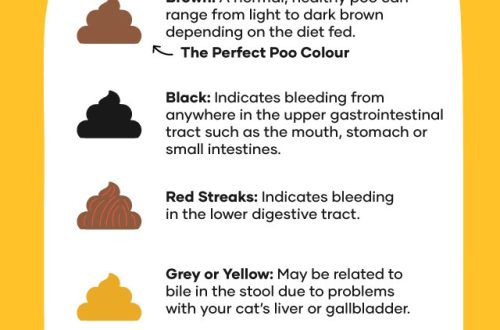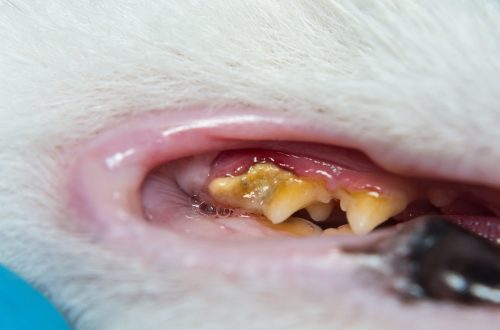
Neutering cats

Contents
Sterilization of Cats Essentials
Sterilization refers to the surgical removal of the uterus and ovaries. Although there are medical methods.
We will talk mainly about the surgical method, since it is the most effective and safe for health.
Spaying cats has more pros than cons.
As a rule, sterilization and castration mean the same thing – the cessation of sexual function. But in terms of terminology, the concepts are slightly different.
Cats can be spayed from 2 months, but most often the operation is performed from 6 months.
The operation can be done at any age, however, the older the pet, the greater the risk of complications and the more important it is to undergo an examination before anesthesia.
Neutering a cat during estrus has no contraindications. But after pregnancy, you need to let the cat recover and wait for the cessation of lactation.
Sterilization can be chemical, surgical, and through a medical implant.
The most common medical indications for surgery are pathologies of the uterus and ovaries.
Contraindications to surgery may be related to the cat’s health and tolerability of anesthesia.
Before the operation, it is necessary to undergo a minimum examination. The younger the pet, the less research will be required before sterilization.
The operation itself lasts no more than 30 minutes. But it is worth considering the time for preparation and postoperative observation in the hospital.
After the operation, it is worth transferring the pet to a special food to reduce the risk of obesity.
Care after the cat is sterilized includes monitoring the well-being of the first day and processing the seam.
Sterilized animals, according to statistics, live 2-3 years longer than their unsterilized relatives.
Pros and cons of sterilization
Owners often ask if a cat should be spayed at all. We’ll list the pros and cons below so you can make your own decision.
The benefits of sterilization include:
Lifespan. According to statistics, animals that are not burdened with sexual instincts live longer.
More calm behavior, no spree. This is especially true if the pet goes outside and disappears there for hours, and sometimes days. Or screaming at the door all night, unable to cope with instincts. A spayed cat will not stray far from home, even if it has access to the outdoors, and will be generally calmer.
Prevention of diseases of the reproductive organs. Very often, cats develop inflammation of the uterus and ovaries, cystic lesions of the ovaries, tumors, pathologies of childbirth and lactation disorders, mastitis. All these diseases can be avoided if the cat is sterilized in time. And (you will be surprised) cats also have sexually transmitted diseases!
Reduced aggression towards other animals. Since there is no more need to win back the territory from the brothers and worry about the offspring, the animals become much calmer and show less aggression towards other animals and towards people.
Prevention of oncology of the mammary glands. Studies show that spaying before the first three heats significantly reduces the risk of breast cancer.
Lack of labels.

The disadvantages include:
Obesity. Spayed animals’ appetite increases, activity decreases, and diet often remains the same, leading to weight gain.
Operational complications. There are always risks of bleeding, rejection of the suture material. Before the operation, it is worth undergoing an examination, especially if the cat is over 6 years old.
anesthesia risks. Any anesthesia is a risk. It is important to choose a clinic with an experienced anesthesiologist who will select an individual anesthesia scheme and will oversee the entire operation and recovery from anesthesia.
Aggression from other animals. If a cat is kept in the same room with non-neutered brethren, they may have a tense relationship.
The difference between castration and sterilization
If you delve into the terminology, then castration is the removal of the reproductive organs, that is, the uterus and ovaries. Sterilization – deprivation of the ability to reproduce offspring. That is, the removal of the uterus while maintaining the ovaries, “tubal ligation”, etc.
The practice of preserving the ovaries in cats is not used in veterinary practice, since this method has too many disadvantages: cats still go on a spree, they can mark their territory, the ovaries are often affected by cysts, and the risk of breast cancer only increases. That is, if you rely on terms, then it is better to castrate a cat than to sterilize. But people are so accustomed to the fact that sterilization is an operation to remove the uterus and ovaries that these concepts have long merged into one.
In the price lists of a veterinary clinic, castration and sterilization of cats often mean the same thing (removal of the uterus and ovaries).
Below, in the section on types of cat spaying, we will discuss in more detail the methods of contraception in cats and the difference between them.
When can a cat be spayed?
At what age can a cat be spayed?
When a new pet appears at home, one of the first questions is how many years / months cats are sterilized. Answer: from 2 months to old age. However, sterilization at different stages of a pet’s life has differences.
Before the first heat
In a shelter, with a large flow of homeless animals, it is customary to sterilize cats from 2 months. This is done in order to give people a non-fertile animal, because if the owners do not sterilize the cat on time, then the population of homeless kittens will be replenished.
Such an early operation requires some experience from the surgeon. Otherwise, it does not affect the health of the kitten in any way. Quite the contrary: such babies endure the rehabilitation period more easily.
Most often, cats are spayed from the age of 6 months. This is due to several factors at once:
By this age, all routine vaccinations have already been carried out.
It is more convenient for a six-month-old cat to calculate anesthesia and perform an operation.

During puberty (from 1 year to 6 years)
Sometimes a cat enters the family as an adult, and then questions arise whether it is too late to sterilize it and at what age it is generally possible to perform the operation.
You will need to undergo a minimum examination: a doctor’s examination, blood tests. Spaying after the third estrus does not reduce the risk of developing breast cancer, but still prevents diseases of the uterus and ovaries.
At an older age
Cats older than 6 years old can also be spayed, but at this age, the examination should be carried out more carefully. Before the operation, you need to take blood tests and conduct an ultrasound diagnosis of the abdominal organs and the heart. Modern anesthetic preparations and the knowledge of veterinarians in this field have developed significantly over the past twenty years, and in the absence of health problems, the operation usually proceeds without complications.
Can a cat be spayed while in heat?
There is a prejudice that cats should not be spayed while in heat. This is explained by the fact that during sexual hunting, the vessels of the uterus are dilated and this increases the risk of bleeding. Practice shows that there is not much difference when to sterilize a cat – during or after estrus. In addition, it is not uncommon when the owners do not notice signs of estrus in a cat and she ends up on the operating table in the estrus stage, so such operations are not uncommon and are as easy as without estrus.
When can a cat be spayed after giving birth?
Sterilization of a cat should be carried out no earlier than a week after birth. The body needs to recover after pregnancy. If a young mother feeds kittens, then sterilization will need to be postponed until lactation is completely stopped.
Should a cat give birth at least once before spaying?
Another prejudice: a cat must give birth “for health.” Where it came from is still unclear. Pregnancy, childbirth, lactation – a lot of stress for the pet’s body. New offspring require a lot of resources. Many refer to the fact that a cat should experience the joy of motherhood. But do not forget that cats are not people. Their psyche is arranged differently, and for them offspring is offspring. Of course, cats get used to people, to each other, they experience emotions, but they are very different from ours. And when they grow up, cats stop perceiving their kittens as their children, and treat them like any other cats.

Is it possible to sterilize a cat without vaccinations?
Lack of vaccinations is not a contraindication to surgery. Immunity from viruses will not affect anesthesia, the course of the operation and recovery in any way. However, there is a risk of visiting the clinic. Of course, in the veterinary clinic, tables, cabinets, and instruments are always processed. And the operating room is a temple of cleanliness and asepsis. But you may encounter an unhealthy animal at the clinic door or in the waiting area. Therefore, if the pet is not vaccinated, when visiting the clinic, it is necessary to carefully avoid contact with other animals. Carrying should be kept on hand. You can queue in the waiting room, and leave the cat in the car with one of the family members. So you limit it as much as possible from stress and the risk of infection.
Types of sterilization of cats
Cats are sterilized in the following ways:
Chemical
It involves the regular administration of drugs containing hormones to stop sexual hunting. Many owners resort to this method: it is inexpensive and easy to perform. Did the cat start screaming? You buy a drug with a horse’s share of hormones in a pharmacy and give it to her. On the 2-3rd day, the cat behaves as usual. But behind the ease of use are dire consequences. These drugs contain substances that enter the bloodstream in large quantities and change the hormonal background very quickly. This is a huge stress for the body, the endocrine system tries to compensate for such sudden changes, which leads to the appearance of cysts on the ovaries and uterus, inflammation of the uterine epithelium, pyometra (purulent inflammation of the uterus) often develops, and these cats also have a much higher risk of breast cancer. .
Introduction of the implant
There is another way of medical sterilization. A special capsule with a drug is injected under the skin, which is slowly released over several months, ensuring the cessation of sexual hunting for this period. This method is safer compared to the chemical one, but it also has its “buts”:
The risk of inflammation of the uterus, ovaries and the development of tumors of the mammary glands does not disappear anywhere. That is, this method only allows you to stop estrus, but does not protect against diseases of the reproductive system.
The drug has many contraindications. If you decide to sterilize in this way, you should consult a reproductive specialist.
Surgical method
The most effective type of sterilization for cats.
The most commonly used laparotomy is an abdominal operation with an incision along the white line of the abdomen or laparoscopic surgery – by puncturing the abdominal wall using special manipulators with a camera and surgical instruments.
Sometimes sterilization is used along the lateral line, that is, an incision is made from the side. Some doctors believe that after such an operation, cats recover faster. In practice, this is not the case. Regeneration takes place with the same timing, but the access itself is much less convenient for the surgeon, and the risk of complications during the operation is higher.
Sometimes in cats, only the ovaries are removed, leaving the uterus. This method can be applied without risk to the health of the pet only in the case of very young patients, up to 5 months of age. If you resort to it at a later age, then there will be a risk of inflammation of the uterus, and in this case, a second operation will be required.
Indications and contraindications
Sterilization may include the following indications:
No need for breeding. If you are not planning kittens, you should consider spaying. Each heat is a stress for the body. They can recur in cats at intervals of several days to several weeks. The body will restart this cycle until fertilization occurs. Often, instead of pregnancy, hormonal disorders occur, leading to serious consequences and even oncology.
Tumors and cysts of the reproductive organs.
Inflammatory processes in the uterus. It can be pyometra or endometritis (inflammation of the uterus with or without pus). Such diseases are difficult to treat, and often there is a risk of rupture of the uterine wall. Removing the affected organ is the only way to help the pet.
Pathologies of pregnancy and childbirth. If the kittens died during gestation or the cat cannot be delivered, she will need urgent surgery.

Contraindications to the operation may be:
Diseases of the internal organs: inflammation of the liver, kidneys, periodic vomiting against the background of chronic enteropathy, etc. In such cases, you should first restore the health of your pet and only then contact the surgeon for scheduled sterilization.
Respiratory system diseases: respiratory tract infections, chest injuries, diaphragmatic hernias, etc. During anesthesia, breathing slows down a bit, and if the pet is unwell, the risk of complications during anesthesia is greatly increased.
Diseases of the cardiovascular system: hypercardiomyopathy, malformations, congestive heart failure increase the anesthetic risk.
Blood diseases: clotting disorders, hematopoietic pathologies, diseases of the red bone marrow, oncology, etc. In this case, any surgical procedures are dangerous.
General malaise, underweight, etc. These are mainly animals picked up on the street or taken from shelters. The cat may be stressed, eat poorly, hide, be too thin. You need to let her get used to the house, to you, to observe how she feels. If the weight is too small, the bones are visible, then first you need to fatten the new pet a little. Then the recovery after the operation will be faster.
It is important to clarify that if the operation is necessary for medical reasons (pyometra, pathology of pregnancy), then the doctor may decide to sterilize, despite contraindications, since these diseases threaten the life of the pet.
Preparing for an operation
Before the operation, you must be sure that the cat is not bothered by anything. She has no vomiting, refusal to eat, fever or other signs of illness.
To reduce stress, you can gradually accustom her to carrying. Lower it to the floor more often, let the cat sniff it, you can try leaving treats inside to reinforce positive associations.
We recommend scheduling the day of surgery for your day off in order to observe the condition of the cat on the first day.
The doctor, depending on the age and breed of the pet, may recommend:
Clinical blood test;
Blood chemistry;
ECHO (ultrasound of the heart);
In some cases, abdominal ultrasound and chest X-ray.
Immediately before the operation, you need to endure hunger for 6-8 hours.
How long does a cat neutering operation take?
The operation itself does not last long – from 15 to 30 minutes. But this does not mean that the cat will be returned to you half an hour after you delivered it to the clinic. First, the doctor will premedicate, that is, he will introduce drugs that will prepare for anesthesia. Next, there will be pre-preparation – shaving the surgical field, sterilizing all surfaces, laying on the operating table, connecting the necessary sensors to monitor the condition, and only then anesthesia and the operation itself. After it, a good doctor will always monitor the patient’s condition during recovery from anesthesia. When the cat is fully recovered and the doctor is sure that everything is in order, it can be taken home.

Nutrition and care
Immediately after the operation, you will need to provide the cat with maximum rest. The first day may be a slight dizziness. It is better to arrange a warm bed for your pet on the floor. Hills, which she likes to climb, are best blocked. Put pillows or thick blankets around sofas/armchairs/beds.
The seam should be wiped with antiseptic liquids every 1-2 days.
Cats can be fed within a few hours after surgery. For the first feedings, it is better to use wet rations and feed the first day in small portions, but a little more often.
After some time after sterilization, many animals have an increased appetite. Therefore, it is better to switch to special food for neutered cats or reduce the calorie content of the diet.
Sterilization and lifespan of cats
Sterilized animals live longer, this is a generally recognized fact that has been confirmed more than once. Castrated animals are less prone to stress associated with sexual hunting. It also reduces the risk of oncology and the development of diseases of the reproductive system (inflammation of the uterus, polycystic). The body does not spend resources on bearing offspring, which also increases life expectancy.
8 2021 June
Updated: 19 June 2021





